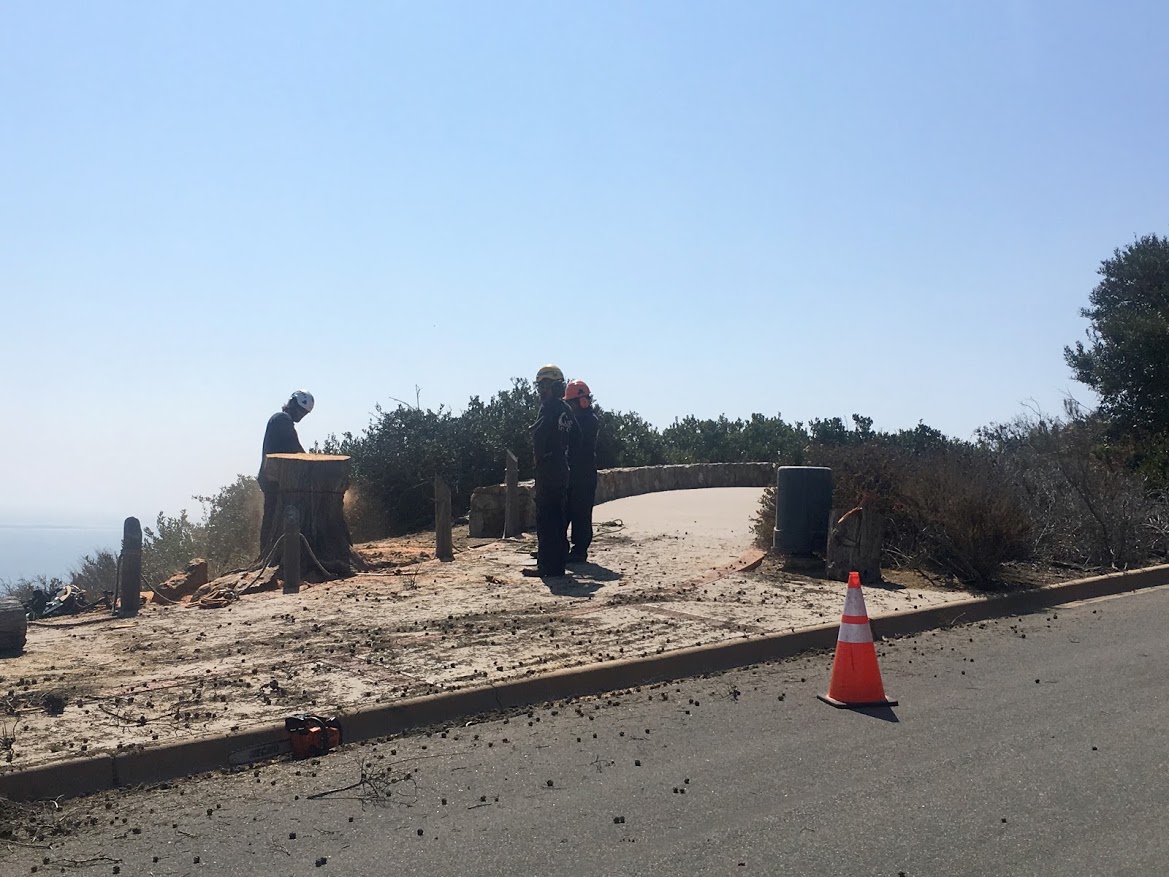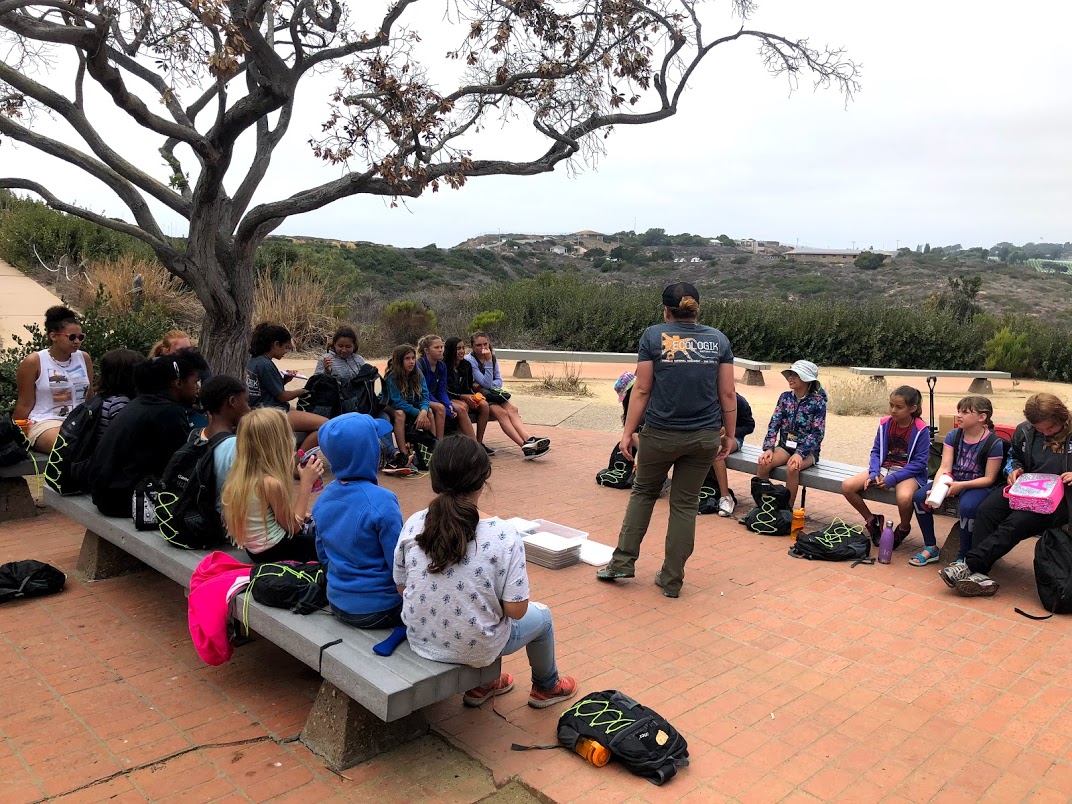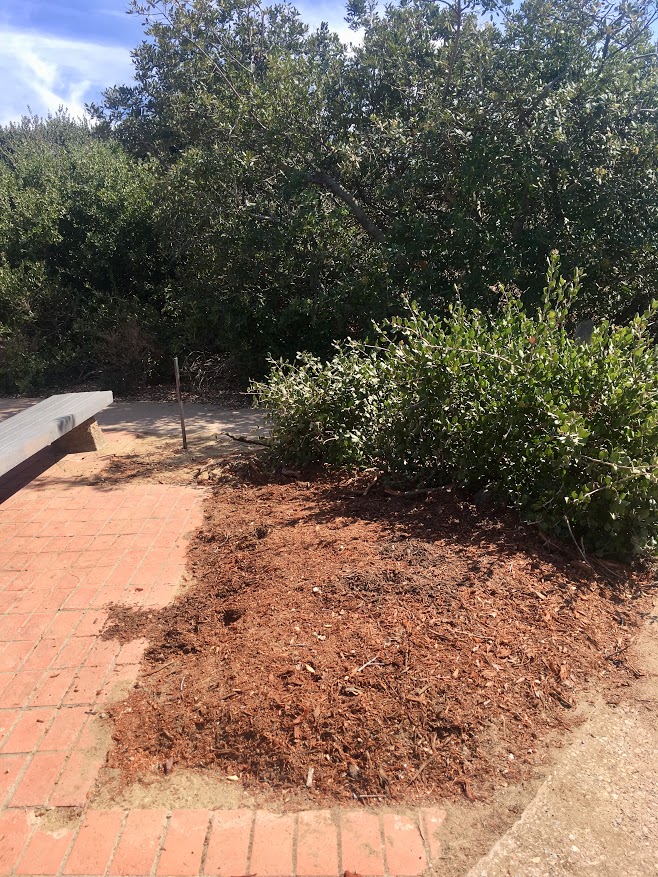 NPS Photo/McKenna Pace – A crew works to cut down the Monterey Cypress tree on the hill near the Lighthouse.
NPS Photo/McKenna Pace – A crew works to cut down the Monterey Cypress tree on the hill near the Lighthouse.If you are an avid reader of the Cabrillo Field Notes Blog, you probably know by now that the National Park Service was created to protect places like Cabrillo National Monument now and for future generations. The mission of the National Park Service presents a lofty goal; on the one hand, we want to provide visitors with a positive experience (places to rest in the shade, for example). On the other hand, we want to protect natural places and keep them [more or less] unchanged into the future. Those two things don’t always work together, which can make management decisions difficult. In the case of the Invasive Trees of Cabrillo, however, the decision was easy. Removing the trees help protect the habitat, because they’re invasive, but both of these trees were dying, as well. Their removal minimized the threat to visitors that the trees may one day fall.
 NPS Photo/Nicole Ornelas – A group of students utilize the area around the New Zealand Christmas Tree at Ballast View during the EcoLogik Summer Program in June.
NPS Photo/Nicole Ornelas – A group of students utilize the area around the New Zealand Christmas Tree at Ballast View during the EcoLogik Summer Program in June.The two species removed were the Monterey Cypress (Hepserocyparis macrocarpa) on the hill toward the Lighthouse and the New Zealand Christmas Tree (Metrosideros excelsa) at Ballast View. As its name suggests, the Monterey Cypress is endemic to the Monterey, California region, where these trees thrive in the relatively cool, humid weather and an environment almost always bathed in fog. Here in Southern California where summers can be harsh, and times of drought can be long, these trees can’t get enough water and steal that resource from native plants. Similarly, the New Zealand Christmas Tree is native to coastal New Zealand and is known as a drought-tolerant, hardy species. This tree is often used in landscaping because it blooms beautiful red flowers in the summer. However, like other invasive species, the New Zealand Christmas Tree can out-compete native species for resources like space and water.
 NPS Photo/McKenna Pace – the area at Ballast View where the New Zealand Christmas Tree once stood.
NPS Photo/McKenna Pace – the area at Ballast View where the New Zealand Christmas Tree once stood.So, while some visitors may be sad to see these trees go, know that their removal is best for the park. And don’t worry, there are still plenty of shady spots around the park that provide respite from the sun. My personal favorite is at Whale Watch Overlook, where the ocean breeze is nice and cool, too.
